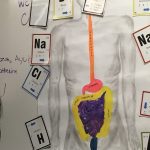Assessment week Science Workshop: Tues. jan. 23, 2024
all students are invited to attend a seed library workshop
What: Learn how to make and maintain a seed library.
When: Tues. Jan. 23, 2024 _ 10:00 am to 11:00 am
Where: Room 220 & Science Lab (Area #2)
Background Information
Have you ever considered the importance of saving seeds? A seed represents the promise of life — a new plant in a ready-to-grow package. It also contains that species’ genetic code that will manifest as traits the plant has evolved to help ensure its survival over the long haul.
Seed banks serve as an insurance policy for the future of agriculture and plant science. Disasters, such as war, hurricanes, and other destructive events, will happen and when they do, entire crops of food and fiber may be eliminated. If seed banks aren’t available to help provide new seeds and plants for these locations, human populations may suffer from devastating conditions, including famines and economic collapse.
The purpose of a seed bank is to:
-
Conserve the diversity of plant species.
-
Offer resources for breeding of stronger crop varieties.
-
Provide food solutions in times of disaster.
-
Safeguard food supplies for future generations.
Learn More with theses Learning links:
SeedSavers Exchange
KidsGardening
Genebank Standards Guide
FAQ:
What are seeds?
Seeds
A brief background
A seed is the part of the plant containing the embryo from which a new plant can grow. Usually the seed contains one embryo and a food supply. Larger seeds have more stored food than small seeds. Food stored in larger seeds is called
the endosperm. In smaller seeds, there are seed leaves called cotyledons, which must be in the light soon after emerging so they can provide food from photosynthesis for the developing seedling. Larger seeds can develop in the dark for much longer than small seeds, but eventually even seedlings that come from large seeds must reach a light source if they are to survive.



